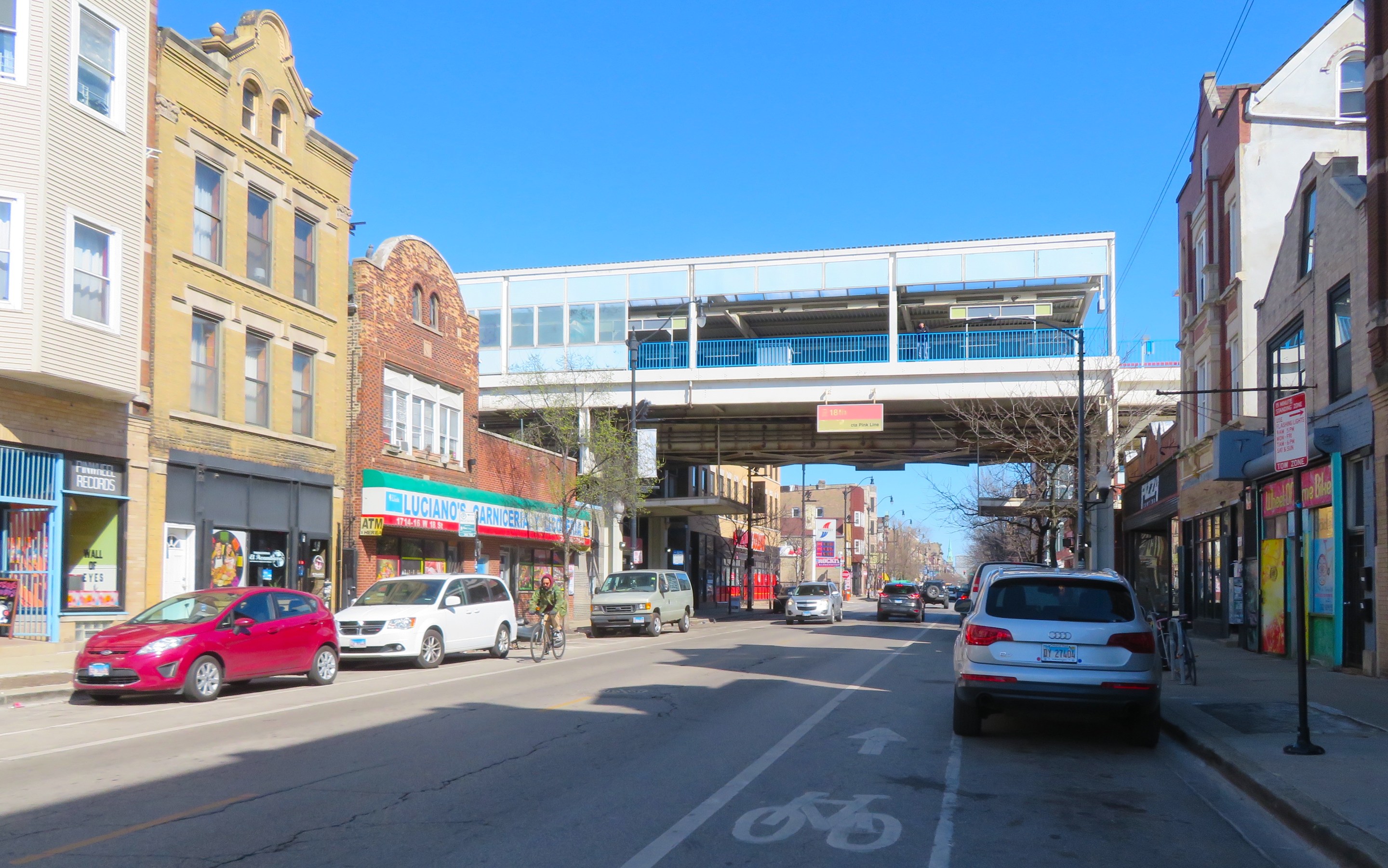
Update 3/22/24: Another option for traveling to and from Pilsen's 18th Street by train, suggested by reader Dan Joseph (see comment below), is Metra's BNSF line. If you're visiting something on the east side of the corridor, like Simone's Bar, 960 W. 18th St., the Halsted Street station would be a good option. If you're going somewhere further west, like 5 Rabanitos Mexican restaurant, 1758 W. 18th St., or the National Museum of Mexican Art, 1892 W. 19th St., get off at the Western Avenue stop.

The Pilsen neighborhood in Chicago's Lower West Side community area was already famous for its Mexican-American culture and arts scene, with lots of notable restaurants, galleries, shops, murals, and more centered on 18th Street. But Pilsen recently got another feather in its cap as Time Out magazine named 18th one of "The 30 coolest streets in the world." (In case you're wondering, back in January Time Out called Chicago one of "The 50 best cities in the world".)
In the new writeup, Time Out Chicago editor Jeffy Mai praises some of 18th Street's many bookstores, taverns, music venues, and legendary places for carnitas, a slow-cooked pork dish that originated in Michoacán, Mexico. He also acknowledges the neighborhood's "challenges with gentrification." Indeed, the problem of longtime Pilsen residents and businesses being priced out of the community by rising rents and property taxes is well documented. Granted, magazine awards like this make even more people want to spend money in and move to the neighborhood, an issue we'll discuss further in a bit.
But since this is a transportation news and advocacy website, let's note that one of the secrets to 18th Street's success is decent sustainable transportation access. This retail district, located roughly between Damen Avenue (2000 W.) and Halsted Street (800 W.), is one of the most vibrant corridors within three miles of the central Loop.
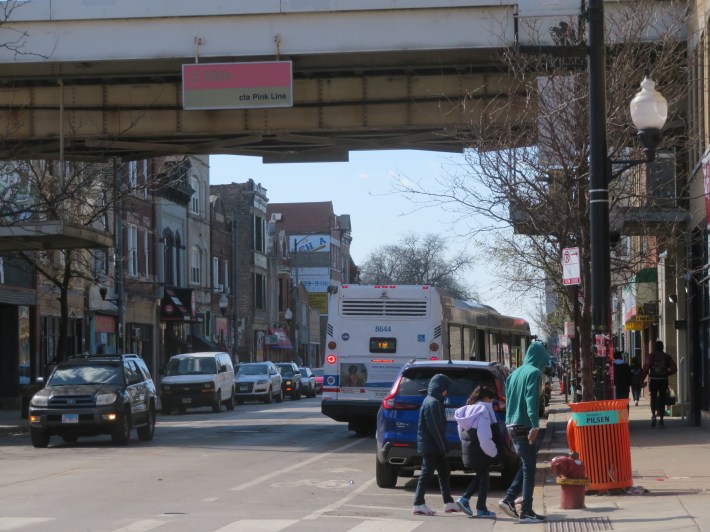
It's relatively easy to access via a short CTA Pink Line trip from downtown to the 18th Station, 1710 W. 18th St., right across the street from beloved Carnitas Uruapan, 1725 West. The corridor is also served by the transit system's 18 16th-18th, 50 Damen, 9 Ashland, 60 Blue Island/26th, and 8 Halsted buses.
Bicycle access to 18th Street is also OK nowadays. There are non-protected bike lanes on 18th, Damen, and Halsted. And last year the Chicago Department of Transportation installed protected lanes on Blue Island Avenue, the diagonal that leads from Roosevelt Road (1200 S.) to Pilsen's Plaza Tenochtitlán, located at 18th and Loomis Avenue (1400 W.).
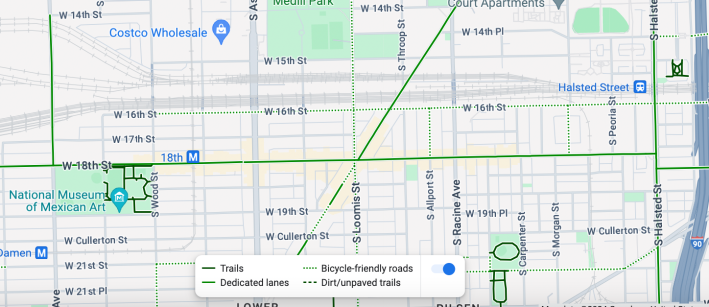
18th Street's two-lane layout and dense retail also make it a fairly pleasant place to walk.
But a weakness of the district's current transportation system was tragically highlighted in September 2018. That's when a car passenger opened their door on Thomas Ferrer, 25, an architecture student, as he bicycled in a non-protected lane on the 1100 block of 18th. He was thrown into the roadway and struck by an SUV driver, and Ferrer suffered a traumatic brain injury.
Streetsblog contacted a few local agencies, politicians, and walk/bike/transit advocates to ask what's been done recently, or should be done, to make 18th a safer, more enjoyable place to use sustainable transportation. While CDOT didn't respond, clearly the bike lanes need to be upgraded to help prevent more traffic violence. Even just painting them solid green would remind motorists that they need to check for people on bikes before leaving their vehicles, to make sure they don't "door" cyclists.
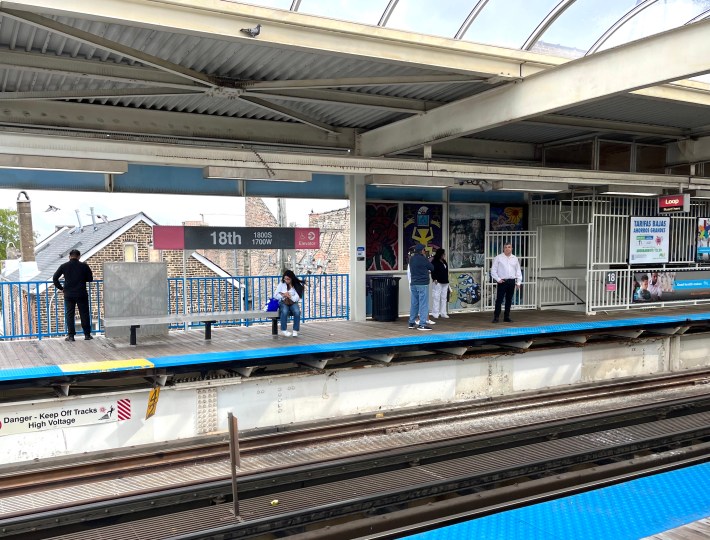
A CTA spokesperson did provide some transit updates, stating that there have been no recent changes to bus or rail routes that serve the Pink Line station and the immediate surrounding area. "But there have been other recent service changes made to improve service and transit connections on Chicago’s West Side," they wrote. "The CTA planning department routinely analyzes ridership and service levels to look for the most effective ways to... spend every dollar where service is most needed."
While that's not great news for Pilsen residents, on the bright side the spokesperson said the agency is updating the weathered 18th Street station artwork. "Artist Sal Vega who originally painted the artwork on the mezzanine level is currently working on recreating artwork for the space. This work is expected to be installed by the end of the year."
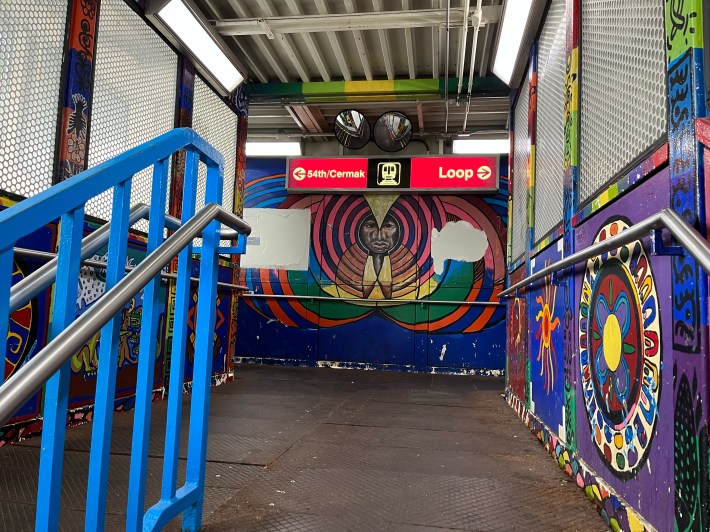
Local alderperson Byron Sigcho-Lopez (25th), a Democratic Socialist, also got back to Streetsblog about the Time Out Chicago accolade. "18th Street, or as we call it La Dieciocho, has been recognized a few times," he said. "I'm glad to see the appreciation of the corridor. But the number one thing that makes this community vibrant is its people, so we don't want to lose its diversity as Mexican residents continue to fight to stay here. We want to welcome new neighbors and development, but also preserve affordability."

The Bring Chicago Home referendum to fund affordable housing and homeless services through a new real estate transfer tax on properties over $1 million appears to have failed in last Tuesday's election. But Sigcho-Lopez said that Franciscan Outreach is opening a new facility in the ward at 24th Street and Western Avenue (2400 W.) with a capacity of about 300 spaces to serve unhoused Chicagoans.
The alder said that, along with keeping the neighborhood affordable, he's committed to creating safer streets, especially after two recent tragedies hit particularly close to home. On August 23, a turning SUV driver with a suspended license failed to yield to Irene Celestino Devillada, 48, walking in a Pilsen crosswalk, and fatally struck her at Cermak Road (2200 S.) and Hoyne Avenue (2100 W.). That's directly in front of Ald. Sigcho-Lopez's service office.
Then on October 6 a 55-year-old man was on foot on the 1900 block of West Cermak, two blocks east of the earlier fatality, when a pick-up truck driver fatally struck him and fled the scene.
"We shouldn't wait for another tragedy to happen before we take action," the alder said. He said he's currently in talks with CDOT and the Illinois Department of Transportation about improving the design of Cermak, and the ward has a transportation committee made up of residents who are providing input on the issue.
As for improving sustainable transportation access on 18th Street, Ald. Sigcho-Lopez said, "We want to make it greener, with more transit and biking, instead of just driving." He's interested in taking another look at the City's long-shelved proposal for bus rapid transit on Ashland, which would be a handy way to reach the corridor from parts south and north.
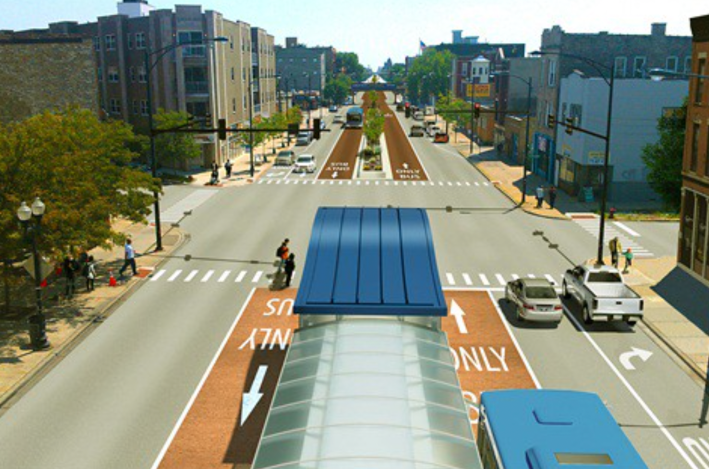
And Ald. Sigcho-Lopez had some encouragement for people who ride bicycles, but don't feel safe using the non-protected lanes on 18th. He said CDOT is working on turning 16th Street in Pilsen, already a good alternative to 18th, into a designated Neighborhood Greenway route with traffic calming, street markings, and signage. He called that "exciting news about bikes."
Here's hoping that more sustainable transportation initiatives happen on 18th Streets in the near future. Then 18th won't just be one of the world's coolest streets, but also one of Chicago's safest, most enjoyable retail corridors to walk, bike, and take transit on.

Did you appreciate this post? Please consider making a tax-deductible donation to help Streetsblog Chicago keep publishing through 2025. Thank you.
